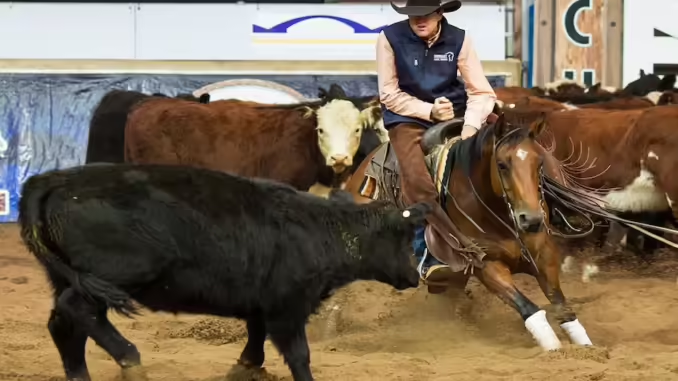
The sprawling paddocks, stunning horses, romance and drama of modern-day American western television series Yellowstone has created a cultural phenomenon that has spread to Australia.
The story follows the Dutton family, who own the largest ranch in Montana and use political, business and even violent tactics to keep it.
Amid the drama is stunning rural scenery and paddocks filled with horses likely worth more than your car.
The romance of ranching has caught the eyes, and wallets, of Australians keen for a little cowboy in their own life.
In particular, the popular series has drawn interest in the riding discipline of cutting, a sport that sees horse and rider separate cattle from a herd.
National Cutting Horse Association of Australia general manager Wayne Brown said there was a clear “Yellowstone effect” that had raised awareness of the sport.
“As the series progressed and they started rolling in the working performance horses, it was really interesting,” he said.

“For people that knew nothing about the sport, it just shone an added light that there was a sport attached to that western lifestyle.
“We’ll get people ring the office asking how do we become a member? Where would I find a trainer? Where would I find a suitable horse?”
He looks like Rip’
Horse trainers also report a Yellowstone effect in New South Wales, which is changing the face of the local industry and turning what was once considered a hobby or side hustle into a well-paying career.
“Guys like myself, we’ve always thought cowboys pretty cool, and Yellowstone’s made it even cooler,” Bulahdelah trainer Jay Charnock said.
“When I had a bit of a beard and I rode past somewhere, there was a bunch of people on the fence going ‘He looks like Rip’.
“It’s definitely brought more money into the sport and industry.”

From hobby to full-time career
Mr Charnock said Yellowstone had pushed up demand for quality bred horses along with the people needed to train them to compete in disciplines like cutting and campdrafting.
He said that demand made training a more viable living — a different scenario to when he started more than 10 years ago and studied horse dentistry to help pay the bills.
“A lot of trainers had other part-time jobs,” Mr Charnock said.
“Back when I started, there was probably a handful of trainers and you know they were doing it pretty tough and working their butt’s off to make a living out of it.
“I was [doing] a bit of both and I just kept being pulled away to do dentistry because the money was really good, better than horse training.”
Eventually things turned around and Mr Charnock became more well known and built up enough clients to work as a full-time trainer.
Mr Charnock said young trainers starting out now were earning enough to go without a second job.
Mr Brown said horse breeding had seen the same demand.
“It’s probably taken it from a being a bread-and-butter type profession to a genuine profession with an industry attached to it,” he said.
“There’s lot of young horse people saying, ‘Hey, I can make a living out of this now’.”
